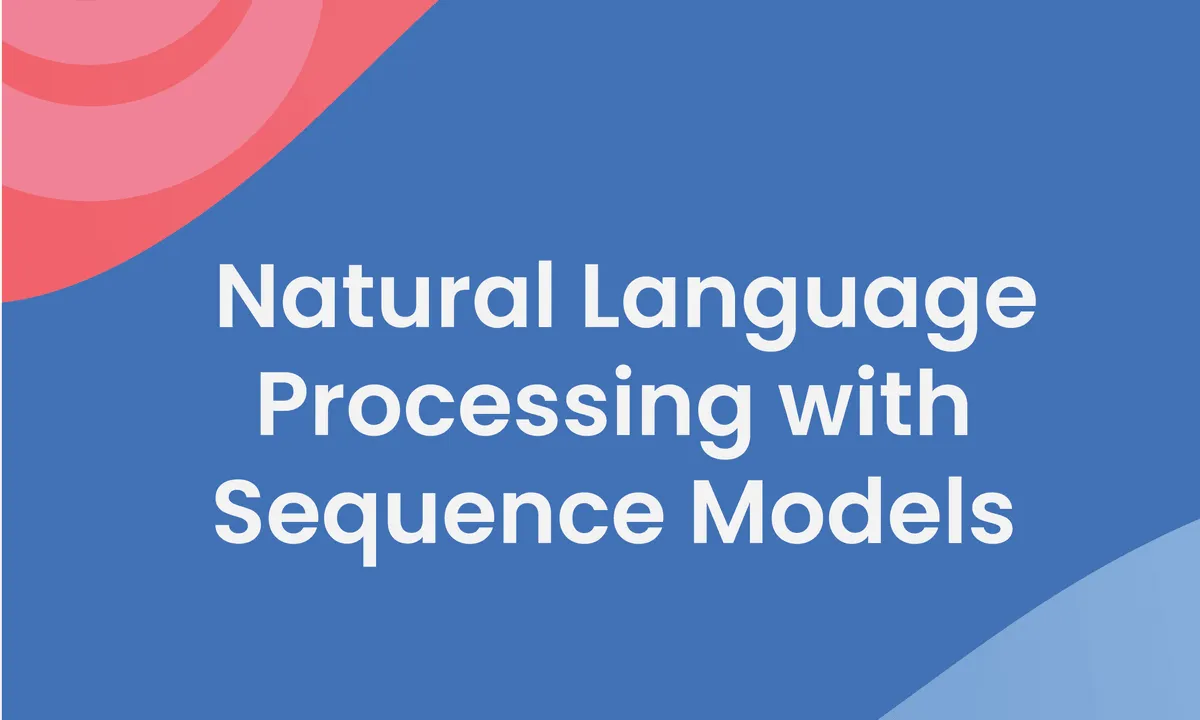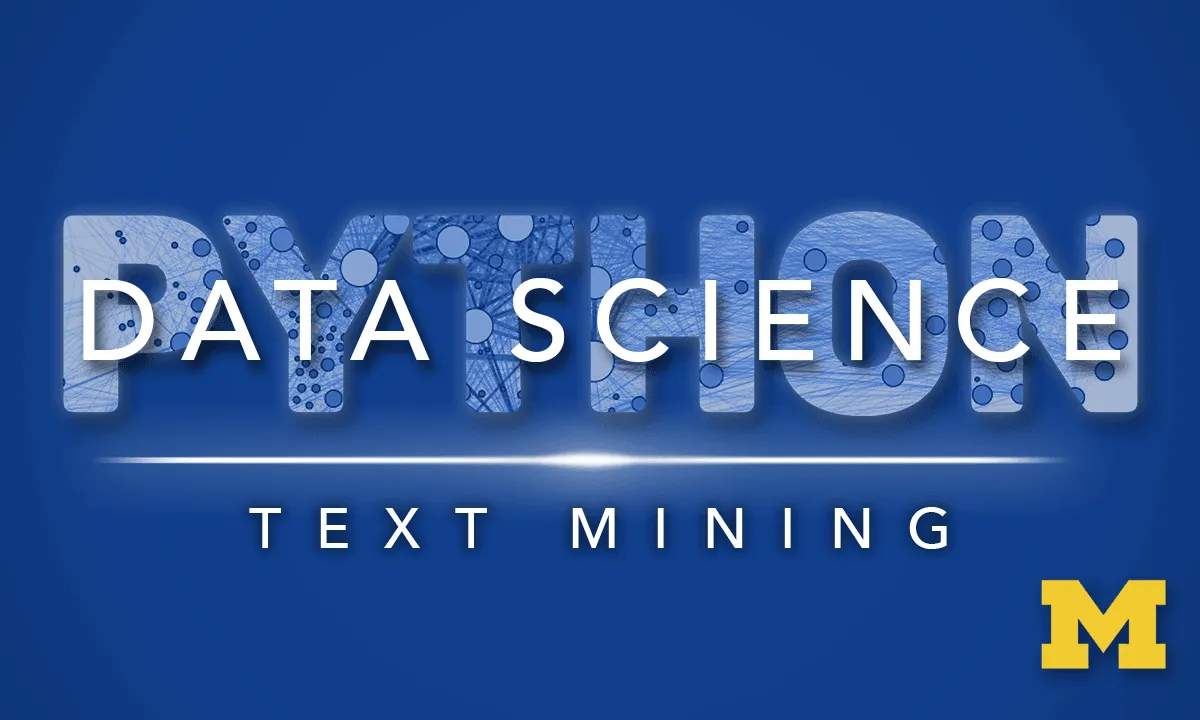
Natural Language Processing with Sequence Models 
This course will teach you how to use sequence models to perform natural language processing tasks such as sentiment analysis, named entity recognition, question-answering, language translation, and text summarization. You will learn how to use GLoVe word embeddings, Gated Recurrent Units (GRUs), Long Short-Term Memory (LSTM) networks, and Siamese LSTM models. This course is taught by two experts in NLP, machine learning, and deep learning. By the end of this Specialization, you will have the skills to design and build NLP applications. ▼
ADVERTISEMENT
Course Feature
![]() Cost:
Cost:
Free
![]() Provider:
Provider:
Coursera
![]() Certificate:
Certificate:
Paid Certification
![]() Language:
Language:
English
![]() Start Date:
Start Date:
17th Jul, 2023
Course Overview
❗The content presented here is sourced directly from Coursera platform. For comprehensive course details, including enrollment information, simply click on the 'Go to class' link on our website.
Updated in [May 25th, 2023]
In Course 3 of the Natural Language Processing Specialization, students will learn to train a neural network with GLoVe word embeddings to perform sentiment analysis of tweets, generate synthetic Shakespeare text using a Gated Recurrent Unit (GRU) language model, train a recurrent neural network to perform named entity recognition (NER) using LSTMs with linear layers, and use so-called ‘Siamese’ LSTM models to compare questions in a corpus and identify those that are worded differently but have the same meaning. By the end of this Specialization, students will have designed NLP applications that perform question-answering and sentiment analysis, created tools to translate languages and summarize text, and even built a chatbot. This Specialization is designed and taught by two experts in NLP, machine learning, and deep learning: Younes Bensouda Mourri, an Instructor of AI at Stanford University, and Łukasz Kaiser, a Staff Research Scientist at Google Brain.
[Applications]
After completing this course, students can apply their knowledge of Natural Language Processing with Sequence Models to a variety of tasks. These tasks may include sentiment analysis, text summarization, question-answering, language translation, and chatbot development. Additionally, students can use the skills they have learned to build more complex models such as Gated Recurrent Unit (GRU) language models and Siamese LSTM models.
[Career Paths]
1. Natural Language Processing Engineer: Natural Language Processing Engineers are responsible for developing and deploying natural language processing (NLP) models and applications. They use machine learning and deep learning techniques to create algorithms that can understand and interpret natural language. They also develop tools to automate tasks such as text summarization, question-answering, and sentiment analysis. The demand for NLP Engineers is growing rapidly as more companies are looking to leverage the power of NLP to improve their products and services.
2. Machine Learning Engineer: Machine Learning Engineers are responsible for developing and deploying machine learning models and applications. They use a variety of techniques such as supervised and unsupervised learning, deep learning, and reinforcement learning to create algorithms that can learn from data. They also develop tools to automate tasks such as image recognition, natural language processing, and recommendation systems. The demand for Machine Learning Engineers is growing rapidly as more companies are looking to leverage the power of machine learning to improve their products and services.
3. Data Scientist: Data Scientists are responsible for analyzing and interpreting data to uncover insights and trends. They use a variety of techniques such as statistical analysis, machine learning, and deep learning to create algorithms that can learn from data. They also develop tools to automate tasks such as predictive analytics, natural language processing, and recommendation systems. The demand for Data Scientists is growing rapidly as more companies are looking to leverage the power of data to improve their products and services.
4. Artificial Intelligence Engineer: Artificial Intelligence Engineers are responsible for developing and deploying artificial intelligence (AI) models and applications. They use a variety of techniques such as supervised and unsupervised learning, deep learning, and reinforcement learning to create algorithms that can learn from data. They also develop tools to automate tasks such as image recognition, natural language processing, and recommendation systems. The demand for AI Engineers is growing rapidly as more companies are looking to leverage the power of AI to improve their products and services.
[Education Paths]
1. Bachelor's Degree in Natural Language Processing: A Bachelor's Degree in Natural Language Processing is a great way to gain a comprehensive understanding of the field. This degree program typically covers topics such as machine learning, artificial intelligence, linguistics, and computer science. Students will learn how to develop algorithms and models to process and analyze natural language data. This degree is becoming increasingly popular as the demand for NLP professionals grows.
2. Master's Degree in Artificial Intelligence: A Master's Degree in Artificial Intelligence is a great way to gain a deeper understanding of the field. This degree program typically covers topics such as machine learning, deep learning, natural language processing, and computer science. Students will learn how to develop algorithms and models to process and analyze natural language data. This degree is becoming increasingly popular as the demand for AI professionals grows.
3. Doctoral Degree in Natural Language Processing: A Doctoral Degree in Natural Language Processing is a great way to gain a comprehensive understanding of the field. This degree program typically covers topics such as machine learning, artificial intelligence, linguistics, and computer science. Students will learn how to develop algorithms and models to process and analyze natural language data. This degree is becoming increasingly popular as the demand for NLP professionals grows.
4. Master's Degree in Data Science: A Master's Degree in Data Science is a great way to gain a comprehensive understanding of the field. This degree program typically covers topics such as machine learning, artificial intelligence, natural language processing, and computer science. Students will learn how to develop algorithms and models to process and analyze data. This degree is becoming increasingly popular as the demand for data science professionals grows.
Pros & Cons

1. Python tutorials and assignments help learn the Trax framework.

2. Provides understanding of models like Siamese model for natural language.

3. Improved understanding of deep learning framework Trax.

4. Insightful live discussions on YouTube.

5. Nice study resources in Python scripts and linked documentation.

1. Very short videos lacking intuition and understanding of sequence models.

2. Lecturers' teaching presence and explanations are insufficient.

3. Exercises are repetitive and uninteresting, focusing on Trax API application.

4. Programming assignments have errors and poor explanations.

5. Insufficient depth in assignments, lacking in-depth understanding of models.

6. Use of Trax framework limits experience with widely-used frameworks like TensorFlow or PyTorch.

7. Lack of logical reasoning and discussions from different perspectives.

8. Implementing data loaders every week makes exercises boring.

9. Mathematical derivation of LSTM's superiority should be included in videos.
Course Provider

Provider Coursera's Stats at AZClass
Discussion and Reviews
0.0 (Based on 0 reviews)
Explore Similar Online Courses

Academic and Business Writing

Reiki Master Teacher Advanced Certificate + Course Material

Python for Informatics: Exploring Information

Social Network Analysis

Introduction to Systematic Review and Meta-Analysis

The Analytics Edge

DCO042 - Python For Informatics

Causal Diagrams: Draw Your Assumptions Before Your Conclusions

Whole genome sequencing of bacterial genomes - tools and applications

Text Analytics 2: Visualizing Natural Language Processing

Applied Text Mining in Python


Start your review of Natural Language Processing with Sequence Models